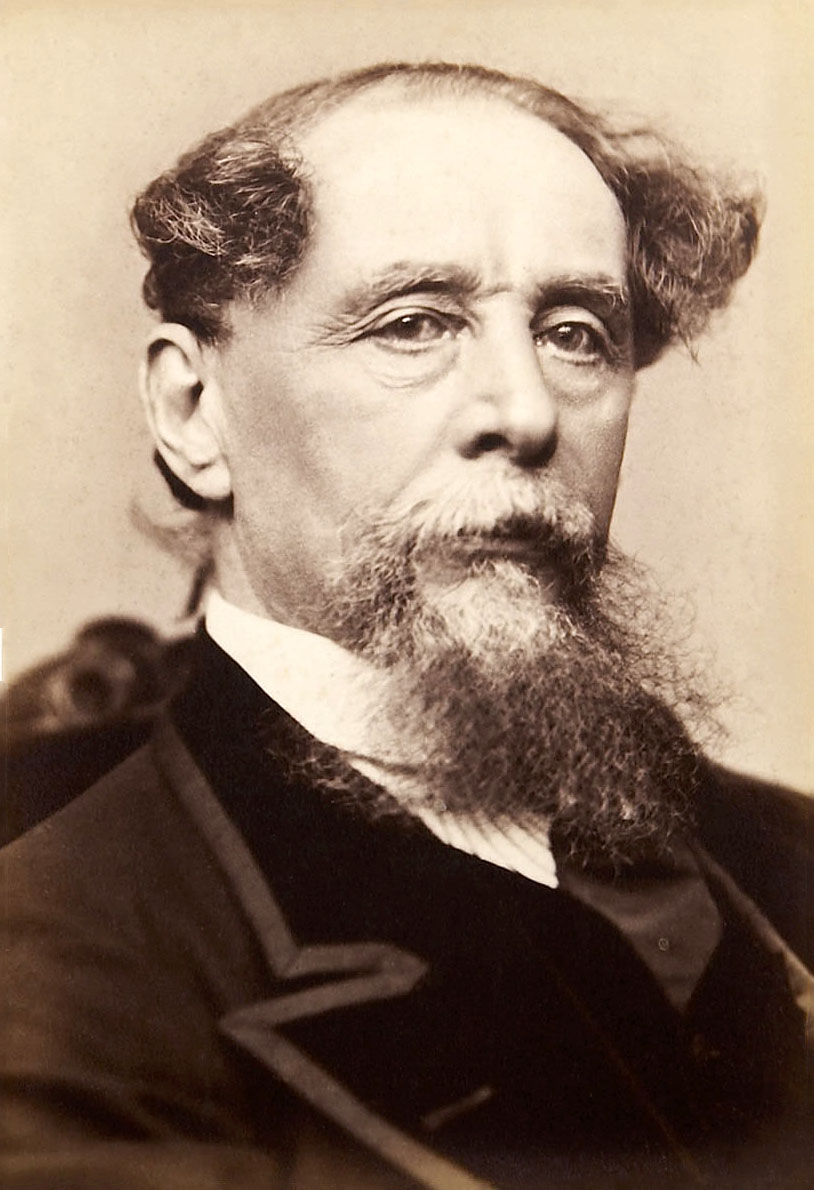 |
| Source: Wikipedia |
Charles Dickens has been in the news a lot recently. With his bicentenary in 2012, events and celebrations are being announced with increasing frequency (such as a BFI film festival and Dickens-inspired schedule at the BBC).
One story that caught my eye in particular was the preservation work being carried out on a screen divider decorated by Dickens and William Macready in the 1850s.
Pasted over with pictures cut from prints and periodicals, this decoupage screen offers a composite snapshot of nineteenth-century politics, as well as historical, literary and scientific cultures: Lord Nelson, The Duke of Wellington, Napoleon, Henry VIII, several Shakespearean scenes, William Blake, Lord Byron, Isaac Newton, etc.
 |
| Charles Dickens' and William Macready's screen Source: Daily Mail |
The screen has been donated by Macready’s descendants to Sherborne House, Macready’s home in Dorset. Speaking in the Daily Mail, John Sunderland-Smith (chairman of the Friends of Sherborne House) described the screen as an educational device: ‘The pictures include the names of the day as well as Shakespeare and classical history -- things Macready would want his children to know’ [1]. As such, the act of decoupage, of cutting and pasting together, is read in terms of its ability to preserve and narrate. Each disparate image recalls an individual or event (someone or something deemed worthy of a place on the screen), but they combine to tell a broader story -- a distinctly national story, a snapshot of this sceptred isle, what the Daily Mail has called the ‘who’s who of Victorian England’.
Dickens’ and Macready’s screen is not the only one of its kind. Decoupage was a popular Victorian leisure activity, although one more commonly associated with feminine handicrafts. Jane Welsh Carlyle, wife of Thomas Carlyle, decorated a similar screen in the late 1840s. The afterlife of this screen sheds a different light on the material objects’ relation to narrative and history.
 |
| Jane Welsh Carlyle's screen Source: National Trust |
After her death in 1866, Carlyle prepared an edition of Jane’s letters. On reaching a description of her screen, he offered the following comment: ‘Stands here to this day, the beautifullest and cleverest screen I have ever seen. How strange, how mournfully affecting to me now’ [2]. Here the screen is a tangible memorial; it embodies the same virtues -- the same cleverness and beauty -- that Carlyle mourns in his dead wife. He bequeathed the screen to Jane’s niece, Mary Aitken, for she ‘[knew] by whom it was made’ and understood ‘the value I have always put upon it, and will take best care of it to the end of her life’ [3]. Thus, in seeking to preserve the screen, Carlyle seeks to keep the memory of its creator alive.
Dickens’ screen has now become part of this biographical discourse -- his screen (and his personality invariably eclipses the input of Macready) is a relic, part of the physical record of his life and something to be visited and admired. Jane Welsh Carlyle’s screen remains on display at Carlyle’s House, 5 (now no. 24) Cheyne Row, and work is under way to identify her pasted images. Both offer an insight into the life narratives that emerge from, and are constructed by, material objects -- human interactions with objects, and the crafting and shaping of objects, become a form of storytelling.
But these stories are never neutral. For example, the two screens produce differently gendered narratives: Dickens and public, national history; Jane Welsh Carlyle and private, familial memory (despite the equally public, equally historical nature of her selected images). I’ll end, therefore, with some questions. How do we read objects, or the manipulation of material things, in the lives of auto/biographical subjects? Do we use them to support or challenge pre-existing life scripts? (In the case of Jane Welsh Carlyle, decoupage as a domestic, feminine handicraft. In the case of Dickens, decoupage as a masculine engagement with public, national histories.)
A forthcoming conference at the new Oxford Centre for Life-Writing on the ‘Lives of Objects’ (September 2013) will provide the perfect arena to investigate further.
[1] ‘The who's who of Victorian England pasted on to a 7ft divider by Charles Dickens to educate an actor friend's children’, Daily Mail, 24 October 2011, www.dailymail.co.uk/news/article-2052772/Screen-Charles-Dickens-Victorian-society-undergoes-restoration.html
[2] Letters and Memorials of Jane Welsh Carlyle. Prepared for Publication by Thomas Carlyle, ed. by James Anthony Froude, 3 vols (London: Longmans, Green, 1883), II, p. 38.
[3] Cited in Carlyle’s House (The National Trust, 1979), p. 23.
No comments:
Post a Comment